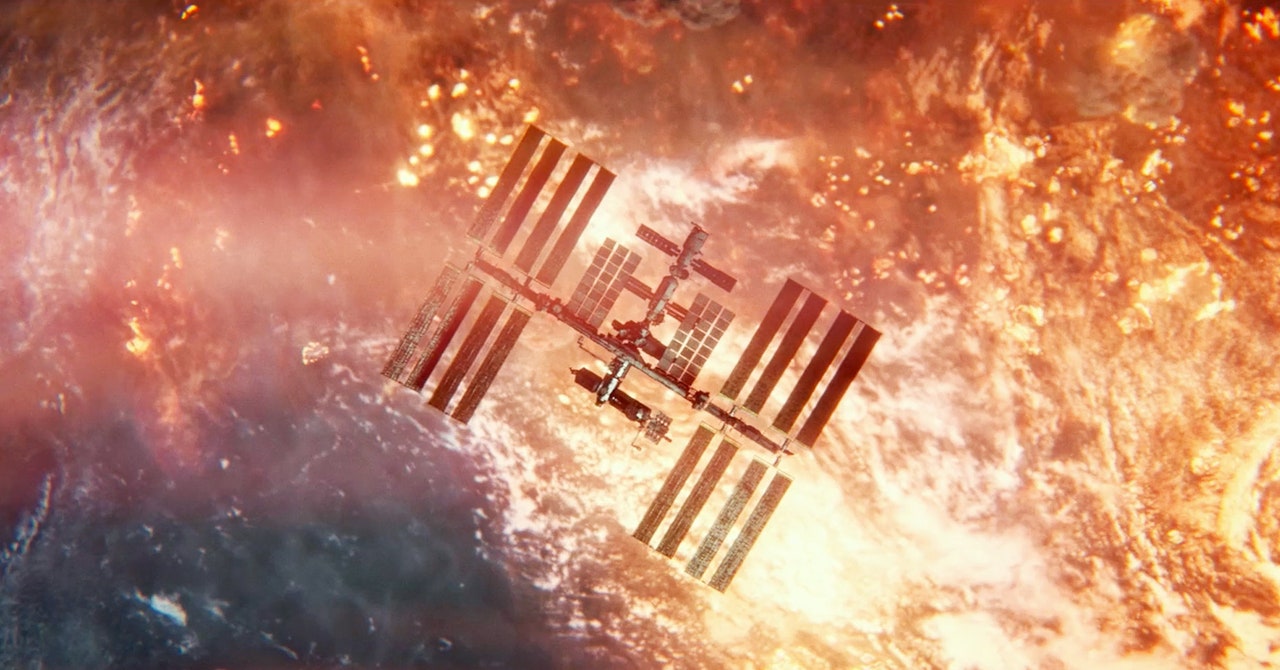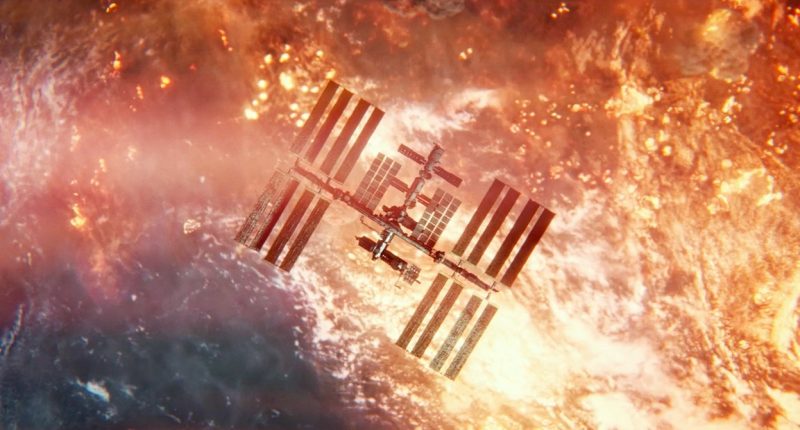

Still, I.S.S. has landed at an awkward time for the actual ISS. Russia and the US are far from a nuclear conflict, but they are on opposite sides of a brutal war in Ukraine that’s gone on for nearly two years and resulted in hundreds of thousands of casualties. While the Russian and American space programs, Roscosmos and NASA, have managed to keep operations aboard the ISS going—scientists from both countries have traveled to and from the station on Soyuz and SpaceX spacecraft—the ISS’s unique situation hasn’t gone unnoticed.
In fact, the station has turned into something of a political bargaining chip. During the 2014 invasion of Crimea, the then-head of Roscosmos, Dmitry Rogozin, responded to US sanctions by suggesting that US astronauts start traveling to the ISS via “trampoline” (at that point, NASA was dependent on Russia’s Soyuz). After the onset of the broader Ukraine war, Rogozin suggested that, without Russia’s help, the ISS could have an uncontrolled deorbit. Recent Russian anti-satellite missile testing—which typically involves shooting down old satellites from Earth—has also created space debris that has endangered astronauts and forced them to shelter, according to US officials.
“There are clear allusions [in the movie] to the conflicts that are happening today between the United States and Russia over Ukraine … and thinking about how the astronauts and cosmonauts are getting along up on the space station now,” says Wendy Whitman Cobb, a political scientist at the US Air Force School of Advanced Air and Space Studies who studies public perception of space.
Could the ISS really become a centerpiece of international world war? A direct nuclear conflict breaking out between the US and Russia seems unlikely right now. But even in that devastating scenario, space policy experts say the space station is designed so that Russia and the US are dependent on each other. The ISS can’t work without both countries’ participation, making the predicament sketched out in I.S.S. improbable. For its part, NASA, when asked about the movie, pointed to the historical success of the station, which, as of November, has been hosting humans for 23 years.
“Through this global endeavor, 276 people from 22 countries have visited the unique microgravity laboratory that has hosted more than 3,000 research and educational investigations from people in 108 countries and areas,” Joshua Finch, a spokesperson for the space agency, told WIRED. “NASA continues to maintain a professional relationship with its space agency counterparts to ensure the safety of the astronauts and cosmonauts aboard the International Space Station and ongoing safe operations.”
It’s not clear the ISS would matter that much to anyone amid such an immense catastrophe, especially since the station is a base for civilian science research. In the film, it’s suggested that the ISS might be storing a cure to radiation sickness that could be helpful in the aftermath of a nuclear war. But I.S.S., space policy expert Namrata Goswami says, did “a poor job of explaining why, when the US and Russia are nuking each other, anyone from Earth would bother to send a message to their respective teams on the ISS, to take control of it, by any means possible.”









